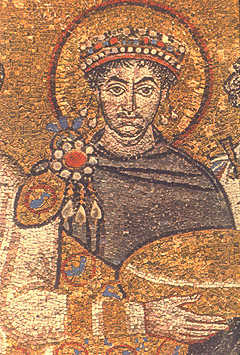
By by Jonathan R. ZISKIND
(University of Louisville, Ky)
"Two people have an argument. The conflict grows increasingly heated, and the two come to blows. The laws of Eshnunna (LE), Hammurabi (LH), Middle Assyria (MAL), the
Hittites (LHitt.), and the Covenant, Deuteronomic, and Priestly compilations in the Hebrew Bible all contain rules which deal with what could happen during the course of the fighting and the
losses incurred as a result of the fighting. Even though none of these ancient jurists sought to outrightly ban this violent activity, they recognized that the injuries and possible loss of
life resulting from this all too frequent occurrence was a concern that had be to addressed. The intention of those responsible for these adverse consequences had to be assessed and appropriate penalties and reparations had to be fixed.
The deaths or injuries stemming from an affray may not be cold-blooded acts, but, resulting from the passion of the fighters, they are not accidental or unintentional either. But even the nature of the passion might be subject to some evaluation. Brawls being what they are,
regardless of who if anybody emerges victorious, either party, once the fight started, intended to inflict bodily harm. Furthermore, at any time in the fracas the culpable fighter could have restrained himself before seriously harming his opponent. The possibility that the affray could have been avoided altogether if one of the two adversaries chose not to fight back after being
struck first (thus the issue would be an assault rather than affray) must also be considered. In addition, the injuries sustained by innocent bystanders has to be considered.
The legal material from Mesopotamia and Asia Minor treats brawling in the manner just described, that is, as a matter of reparations for injury intentionally inflicted but lacking
premeditation.
The laws of the city-kingdom of Eshnunna (c. 1770 B.C.), provide the earliest mention of the legal consequences of a brawl. LE 47 specifies that the person who inflicted any serious injury on a person in the course of a brawl (Akk. ina s?igis?tim) must pay the injured party ten shekels of silver. The five sections of the Eshnunna Laws that preceed #47 specify the penalties for assaults resulting in serious injuries without mentioning accident, negligence, or brawling and hence were probably intentional. These penalties were higher: biting off a nose or destroying an eye, a mina (60 shekels); a tooth or an ear, a half mina (30 shekels); a severed finger, one-third of a mina (20 shekels); a broken hand or foot, a half mina, and a broken collarbone, one-third of a mina. The only penalty that was the same as the one in LE 47 dealing with brawling (10 shekels) is in LE 42 for a slap on the cheek, a compensation more for damaged honor than one?s injured body.
In later Roman law, losses stemming from a turba, a tumult, were actionable for damages. Labeo said that two men or even three or four men having a rixa, a brawl, would not qualify as tumult, because it wouldn?t cause that much of disturbance whereas ten or fifteen men going at it would be a tumult and therefore actionable.
LE 47A stipulates that if the brawl (Akk. risbatum) resulted in the victim?s death, the brawler who caused the death shall pay two-thirds of a mina (40 shekels) of silver (to whom not specified). This is the same penalty that the owner of a habitually goring ox or vicious dog
paid when such animals caused a free person?s death. We can conclude from the Eshnunna material that a death caused in the heat of passion of a brawl was on the same level of culpability
as a death due to negligence, and the case was settled by composition.
Hammurabi?s laws (c. 1750 B.C.) indicate that deaths and injuries that stemmed from brawling homicides were regarded as unintentional but not accidental. This does not seem to be the case in Roman law. A death as a result of a rixa was regarded as accidental. LH 206 stipulates that if a man wounded another man in a brawl, the assailant?s obligation was limited to swearing that he acted unintentionally and paying the other man?s physician. We may assume that if his injuries did not require the services of a physician, the assailant was free of any penalty or obligation towards the man he hurt. Damage to one?s pride or honor was not an issue, probably because the victim had just as much intention to humiliate his opponent as vice versa. LH 207 states that if the victim died and was a member of the awilum or noble class, the assailant, in addition to swearing that he acted unintentionally had to pay a half mina of silver. The next section (LH 208) states that if the victim was a mus?kenum, a commoner, the payment was one-third of a mina.
We may assume that if the assailant could not swear that his act was unintentional, malice was presumed and heavier penalties could be inflicted including talion. So then, if one aristocrat
should blind an eye, break a bone, or knock out a tooth of another aristocrat, talion was applicable. If a pregnant noblewoman died as a result of an assault, vicarious punishment was visited upon the noble assailant?s daughter, that is to say, his daughter was put to death.
Like the Babylonian collection that came after it, the Hammurabi collection, Eshnunna has nothing directly to say about cold blooded murder. We may assume that in both laws it was a capital offence.



